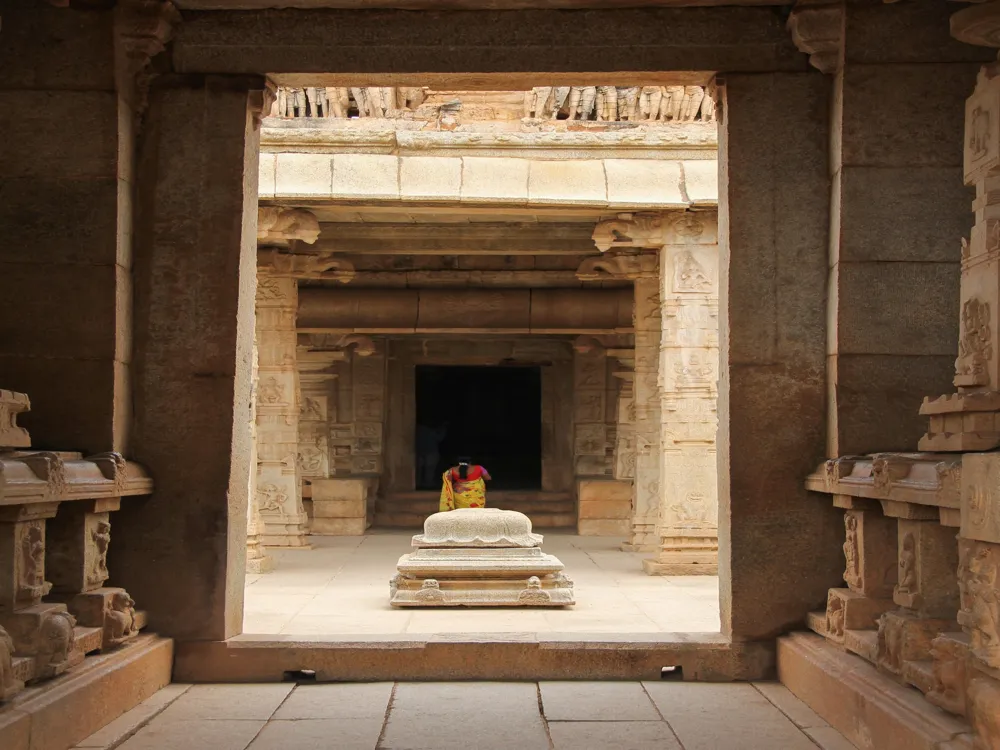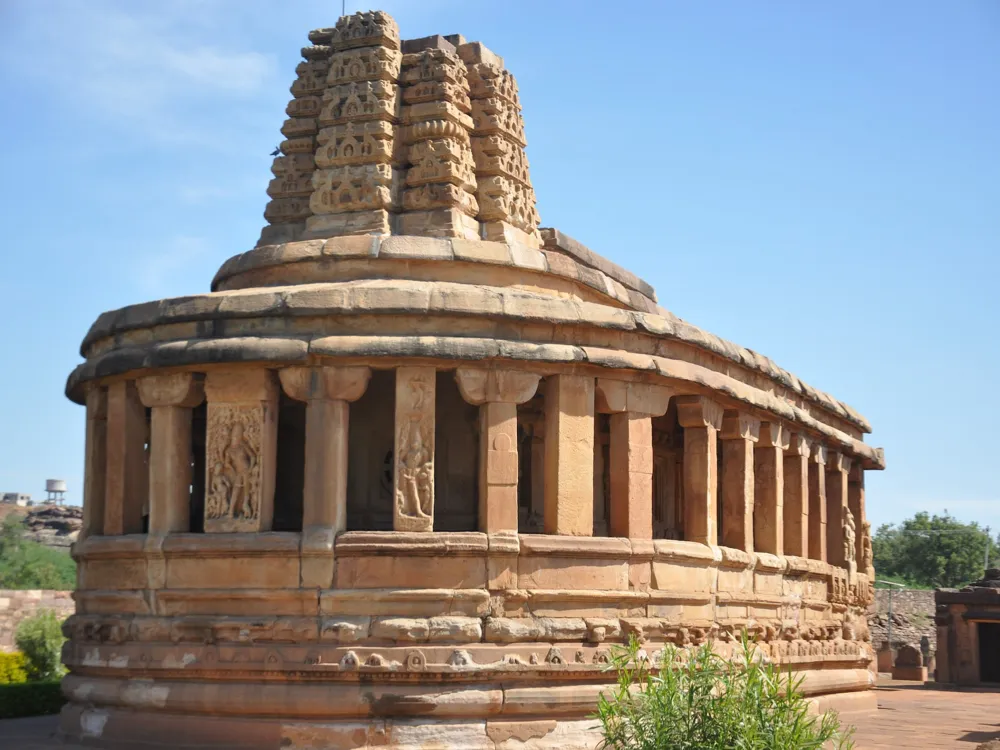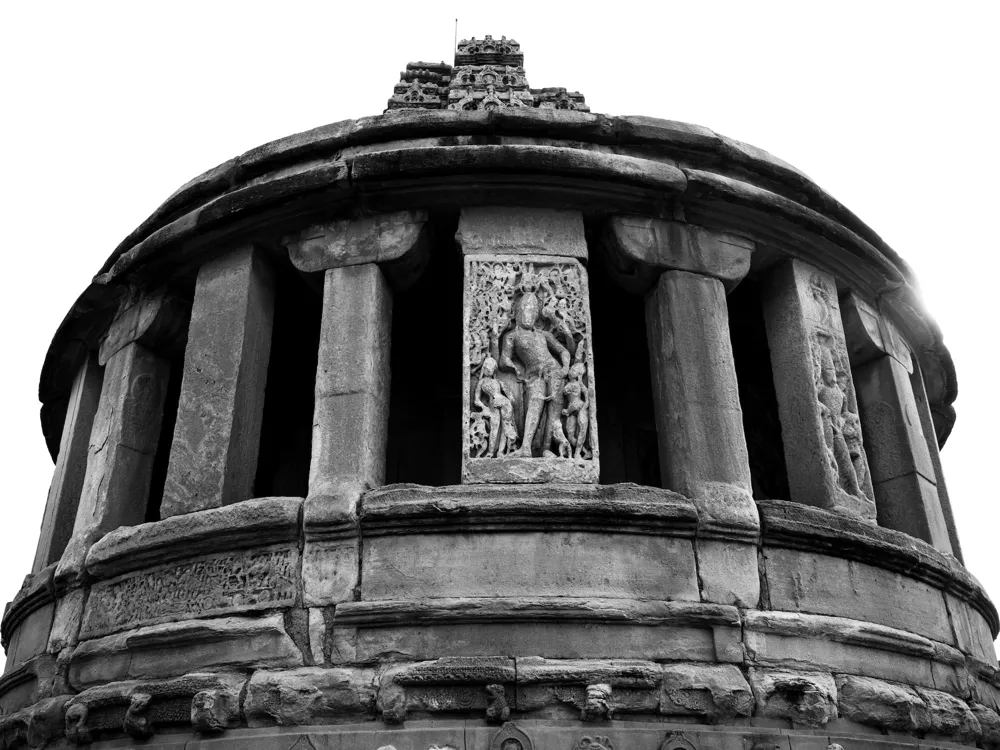Nestled in the ancient ruins of Hampi, Karnataka, the Lakshmi Narasimha Temple stands as a testament to the grandeur of the Vijayanagara Empire. This temple, dedicated to Lord Narasimha, an incarnation of Lord Vishnu, is a significant historical and religious site, attracting thousands of visitors each year. Its location in Hampi, a UNESCO World Heritage site, adds to its allure, drawing not only devotees but also history enthusiasts and tourists from across the globe. The temple's history dates back to the 16th century, a period marked by remarkable architectural advancements under the Vijayanagara rulers. It was during this era that Hampi flourished as a cosmopolitan city with a rich cultural and religious life.
The Lakshmi Narasimha Temple, although partially damaged over centuries, continues to showcase the artistic and architectural brilliance of its creators. The temple's intricate carvings, monumental scale, and the blend of various architectural styles reflect the ingenuity of the Vijayanagara architects. Despite the wear of time and historical events, the temple remains an imposing structure, inspiring awe and reverence. Its significance extends beyond mere aesthetics; it is a symbol of the region's historical resilience and enduring cultural legacy. Visitors to the temple are not just witnessing a religious monument but are stepping into a page of India's rich historical narrative, where every stone tells a story of faith, art, and empire.
The architecture of the Lakshmi Narasimha Temple is a fascinating amalgamation of religious symbolism, artistic expression, and technical expertise. Built in the 16th century, this temple showcases the Vijayanagara style of architecture, characterized by its elaborate carvings, towering gopurams (temple towers), and expansive courtyards. The temple is dedicated to Lord Narasimha, a fierce incarnation of Lord Vishnu, which is reflected in its architectural elements that emphasize grandeur and majesty.
The central figure of the temple is a massive monolithic statue of Lord Narasimha sitting in a cross-legged position. This imposing sculpture, carved out of a single block of stone, is a remarkable example of the sculptural prowess of the Vijayanagara artisans. The statue, originally depicted with Goddess Lakshmi sitting on his lap, has suffered damage over the years. However, even in its current state, it exudes a powerful presence, capturing the essence of Lord Narasimha's protective and destructive powers.
Surrounding the main statue, the temple complex is adorned with a series of intricately carved pillars and panels, each narrating tales from Hindu mythology. These carvings not only serve a decorative purpose but also play a crucial role in religious storytelling, bringing to life the legends and beliefs central to Hinduism. The temple's architecture is a harmonious blend of religious iconography, mythological depictions, and geometric patterns, all coming together to create a space that is both spiritually significant and aesthetically pleasing.
The temple's layout follows the typical Vijayanagara style, with a main sanctum (garbhagriha), a pillared hall (mandapa), and an open courtyard. The mandapa, with its intricately carved columns, serves as a congregation space for devotees. Each column is a testament to the artisans' skill, featuring detailed carvings of gods, goddesses, dancers, and musicians. The ceiling of the mandapa is equally impressive, adorned with finely crafted reliefs depicting various celestial scenes.
The use of locally sourced granite in the construction of the temple is a notable aspect of its architecture. This hard stone, known for its durability, allowed the craftsmen to create detailed carvings that have withstood the test of time. The stone's natural color variations also add to the visual appeal of the temple, creating a play of light and shadow that changes with the time of day.
Despite the ravages of time and historical upheavals, the Lakshmi Narasimha Temple's architecture continues to be a source of inspiration and wonder. Its combination of religious significance, artistic expression, and architectural prowess makes it a must-visit destination for anyone interested in India's rich cultural heritage.
The ideal time to visit the Lakshmi Narasimha Temple is between October and March. During these months, the weather in Hampi is pleasant, with cooler temperatures and minimal rainfall, making it conducive for exploring the temple and its surroundings.
Visitors are advised to dress modestly, keeping in mind the temple's religious significance. It is recommended to wear clothes that cover the shoulders and knees. Additionally, visitors should remove their footwear before entering the temple premises as a sign of respect.
Photography is generally allowed in the temple complex, but it is advisable to check for any specific restrictions or fees. Visitors should be respectful and avoid using flash photography, especially near the main deity, as it can be disruptive.
Hiring a local guide can enrich your visit, as they can provide detailed insights into the temple's history, architecture, and cultural significance. There are several guided tours available, offering various perspectives on the temple and its historical context.
The temple area is generally accessible, but some areas may be challenging for visitors with mobility issues due to uneven terrain. Basic facilities like restrooms and small refreshment stalls are available near the temple.
Lakshmi Narasimha Temple, located in Hampi, Karnataka, is accessible by various means of transportation. The nearest major city is Hospet, which is well-connected by road and rail. From Hospet, Hampi is just a short drive away.
By Air: The nearest airport is in Hubli, about 160 kilometers away. From there, visitors can hire a taxi or take a bus to reach Hampi.
By Train: Hospet Junction is the nearest railway station, well-connected to major Indian cities. From the station, Hampi is about 13 kilometers away, and local transport like auto-rickshaws and taxis are readily available.
By Road: Hampi is well-connected by road to major cities like Bangalore, Hyderabad, and Goa. Buses, both government and private, regularly ply
Overview of Lakshmi Narasimha Temple, Hampi, Karnataka
Architecture of Lakshmi Narasimha Temple
Tips When Visiting Lakshmi Narasimha Temple
Best Time to Visit
Dress Code and Etiquette
Photography Guidelines
Local Guides and Tours
Accessibility and Facilities
How To Reach Lakshmi Narasimha Temple
Lakshmi Narasimha Temple
Hampi
Karnataka
NaN onwards
View hampi Packages
Weather :
Tags : Temple
Timings : 7.30 AM to 5.30 PM
Planning a Trip? Ask Your Question
Hampi Travel Packages
View All Packages For Hampi
Top Hotel Collections for Hampi

Private Pool

Luxury Hotels

5-Star Hotels

Pet Friendly
Top Hotels Near Hampi
Other Top Ranking Places In Hampi
View All Places To Visit In hampi
View hampi Packages
Weather :
Tags : Temple
Timings : 7.30 AM to 5.30 PM
Planning a Trip? Ask Your Question
Hampi Travel Packages
View All Packages For Hampi
Top Hotel Collections for Hampi

Private Pool

Luxury Hotels

5-Star Hotels

Pet Friendly





















